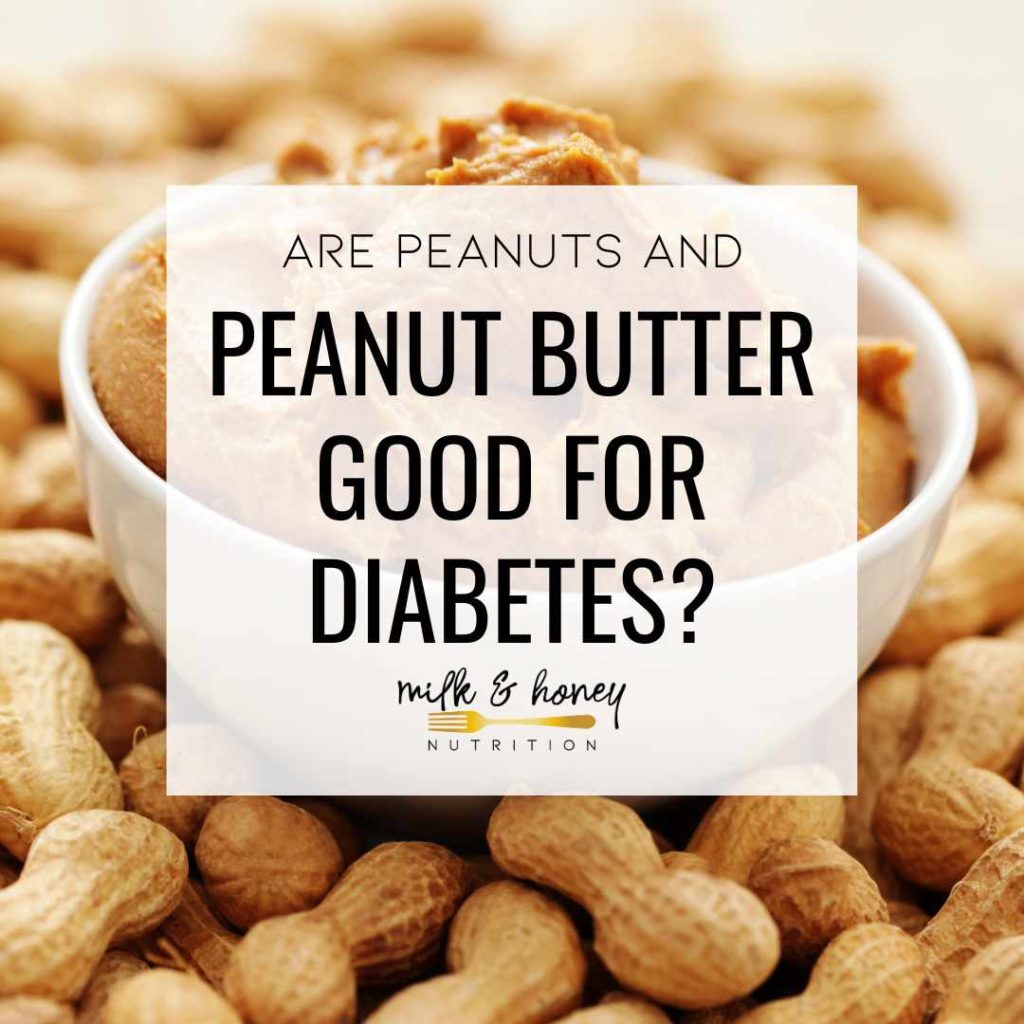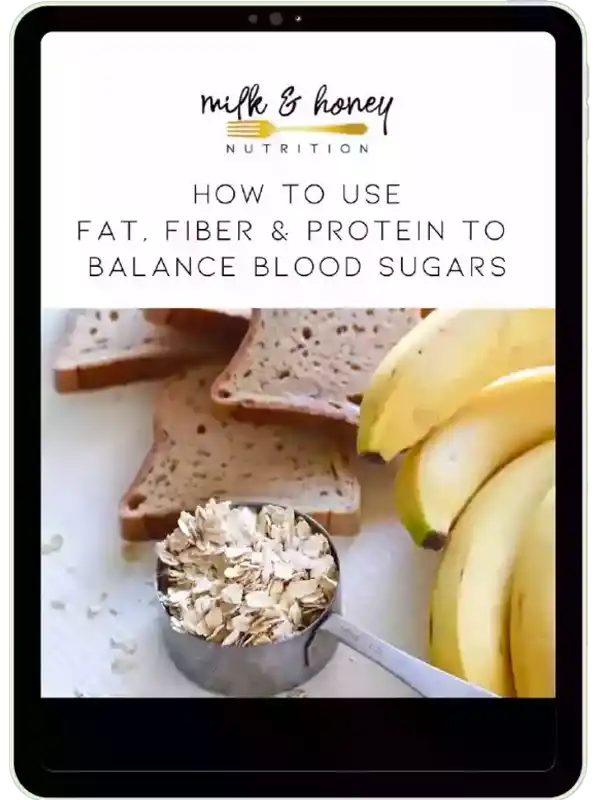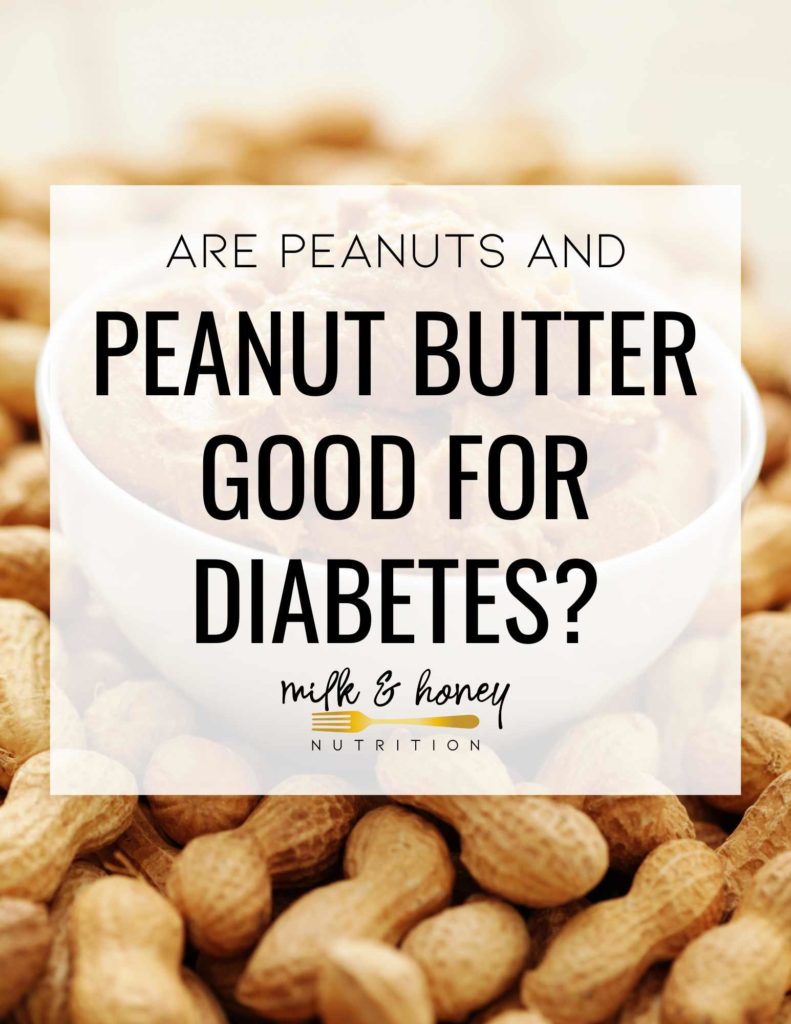
Peanut butter and peanuts are both delicious foods to enjoy, but is peanut butter good for diabetes? Here are the key things to know.
As a registered dietitian living with diabetes myself, I absolutely love peanut butter in a variety of dishes! So let’s breakdown the question, “Is peanut butter good for diabetes?”
Nutrition benefits of peanut butter and peanuts
Peanuts, contrary to the fact that they’re categorized as a nut, actually come from the legume family. In the US, they are most often eaten roasted or after being processed into peanut butter.
Peanuts are rich in protein (though, not as much as you think probably) and plant based fat. And, they’re low in carbohydrates, making them an easy option for people living with diabetes.
Peanuts are also an excellent source of many vitamins and minerals.
Peanut butter has less fiber than raw or roasted peanuts, but still offers a good source of protein and plant-based fats, and unsweetened varieties make a delicious and balanced choice for people with diabetes.
Peanut butter and diabetes
Can people with diabetes eat peanut butter? Are peanuts and peanut butter good for diabetes?
As mentioned above, the macronutrient profile of peanuts and peanut butter do lend themselves to being a great option for people with diabetes. As a dietitian living with diabetes, I regularly use peanut butter to add protein and plant-based fat to my meals.
The protein and fat help to slow down digestion which can lead to less blood sugar spikes and help you feel satisfied and full for longer.
Peanut butter glycemic index
The glycemic index tells us how quickly a food can raise blood glucose levels. (It does not take into account how much carbohydrate is in a food.)
The glycemic index of peanut butter is 14. Peanut butter is considered a low glycemic index food.
| Low glycemic index foods | 0-55 |
| Medium glycemic index foods | 56-70 |
| High glycemic index foods | >70 |
Peanut butter glycemic load
The glycemic load, however, is a more accurate picture of how much and how quickly a food may raise blood sugar levels. The glycemic load considers both how quickly a food can raise blood sugar levels and how much carbohydrate is in the food.
This tells us how much of an impact a food can potentially have on blood sugar levels. The glycemic load of peanut butter is 7. Peanut butter is considered a low glycemic load food.
| Low glycemic load | 0-10 |
| Moderate glycemic load | 11-19 |
| High glycemic load | 20 |
Low glycemic load foods are considered more beneficial for people looking to maintain stable blood sugar levels.
What kind of peanut butter is good for diabetes?
The glycemic index and glycemic load numbers cited above refer to peanut and peanut butters with no added sugar. Most pre-made peanut butter options at the grocery store do contain added sugar. Some more than others.
People with diabetes should look for peanut butters with low amounts of added sugar or none at all.
Is Skippy peanut butter good for diabetes?
Traditional Skippy peanut butter and their Natural line both have 3g of added sugar per serving. This is a moderate amount of added sugar and while not ideal could be an ok choice for someone with diabetes if no other options for peanut butter are available.
Skippy also offers a low sugar peanut butter, but with 2g added sugar per serving. There’s only 1g added sugar difference between the low sugar variety and the regular peanut butter. So, if you prefer the Skippy brand, the 1g added sugar difference isn’t enough in my opinion to warrant buying the low sugar instead of the regular traditional Skippy peanut butter.
Is Jif peanut butter good for diabetes?
Jif offers several varieties of peanut butter that would all be ok for someone with diabetes.
- Their traditional peanut butter has 2g of added sugar.
- The Simply Jif peanut butter has 1g added sugar.
- And, their No Added Sugar peanut butter has 0g added sugar.
Low sugar peanut butter brands
Some of my favorite peanut butter brands to recommend that have no or very little added sugar include the following brands. (Note: Some of the links below are affiliate links. This means I earn a small commission if you decide to make a purchase through the link, at no extra cost to you. )
- Crazy Richard’s Peanut Butter
- Jif Peanut Butter (Simply or No Added Sugar)
- Justin’s Classic Peanut Butter
- Santa Cruz Organic Peanut Butter
- Peanut Butter and Co No Added Sugar Peanut Butter
- Laura Scudder’s Old Fashioned Peanut Butter
- Peter Pan Natural Peanut Butter
How much peanut butter can people with diabetes eat per day?
How much peanut butter someone with diabetes can eat in a day is going to depend on individual needs and situations. While a serving size of peanut butter is typically 2 Tbsp, some people may choose to eat more and some may choose to eat less.
It’s impossible to accurately answer how much peanut butter someone should eat in a day without knowing their individual needs.
Is peanut butter OK if you have high blood sugar?
Peanut butter can be a great way to satisfy hunger when blood sugars are running higher. It offers protein and fat to help satisfy hunger, but lower amounts of carbohydrate. And can possibly help stabilize blood sugars to prevent rebound hypoglycemia.
Does peanut butter raise blood sugar?
Peanut butter may raise blood sugars levels, and especially so if it has higher amounts of added sugar in it. How much it can raise blood sugar levels will depend on individual characteristics and situations.
Peanut butters with low or no amounts of added sugar will be less likely to raise blood sugar levels though.
Can peanut butter lower blood sugar quickly?
No one food can lower blood sugar levels immediately, including peanut butter. It may however help prevent future blood sugar spikes by slowing down the digestion process and carbohydrate absorption.
I have a whole separate post on foods that may help lower blood sugar levels over time.
How to enjoy peanut butter with diabetes
I like to think of peanut butter as a super helpful tool for people living with diabetes. If you like it, it can be a great way to add fat and protein to your favorite meals and dishes… especially higher carbohydrate foods.
Foods that are higher in fat, fiber, and protein… like peanut butter… slow down digestion. Which means you get a more steady supply of energy and may be less likely to experience blood sugar spikes.
Pair peanut butter with carbohydrates, like bread, crackers, and fruit, for a balanced snack or meal.
And, try some of the four delicious recipes below for a yummy peanut butter flavor.
1. Low Sugar Peanut Butter Fruit Dip
This low sugar peanut butter fruit dip is a great way to get more fruit into snack time! The fat and fiber from the peanut butter help balance out the carbohydrate in your favorite fruits.
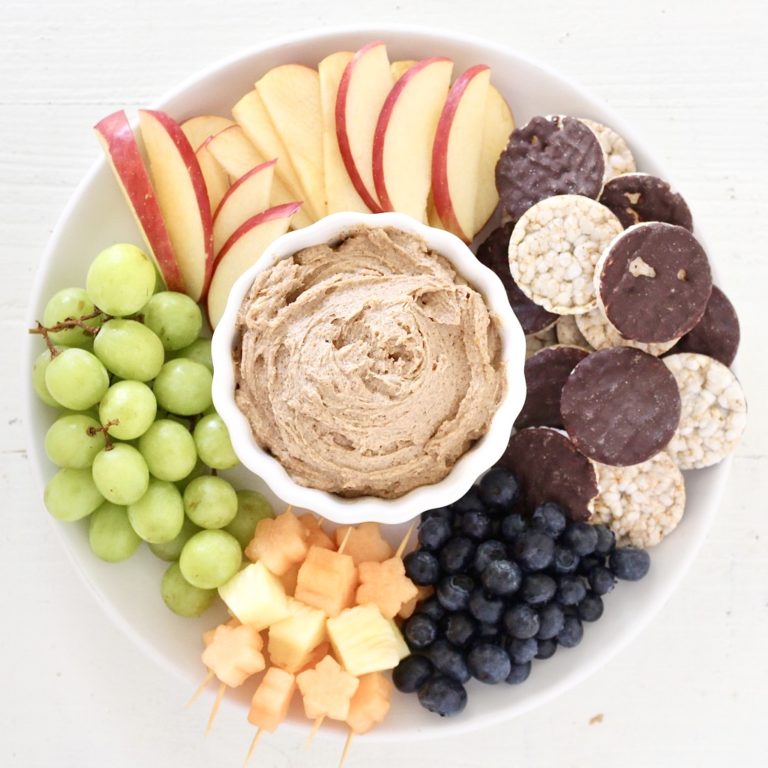
2. Peanut Butter and Banana Protein Overnight Oats
We’re giving boring old overnight oats an upgrade with some rich sources of fat, fiber, and protein. And, kefir gives these oats a probiotic boost as well!
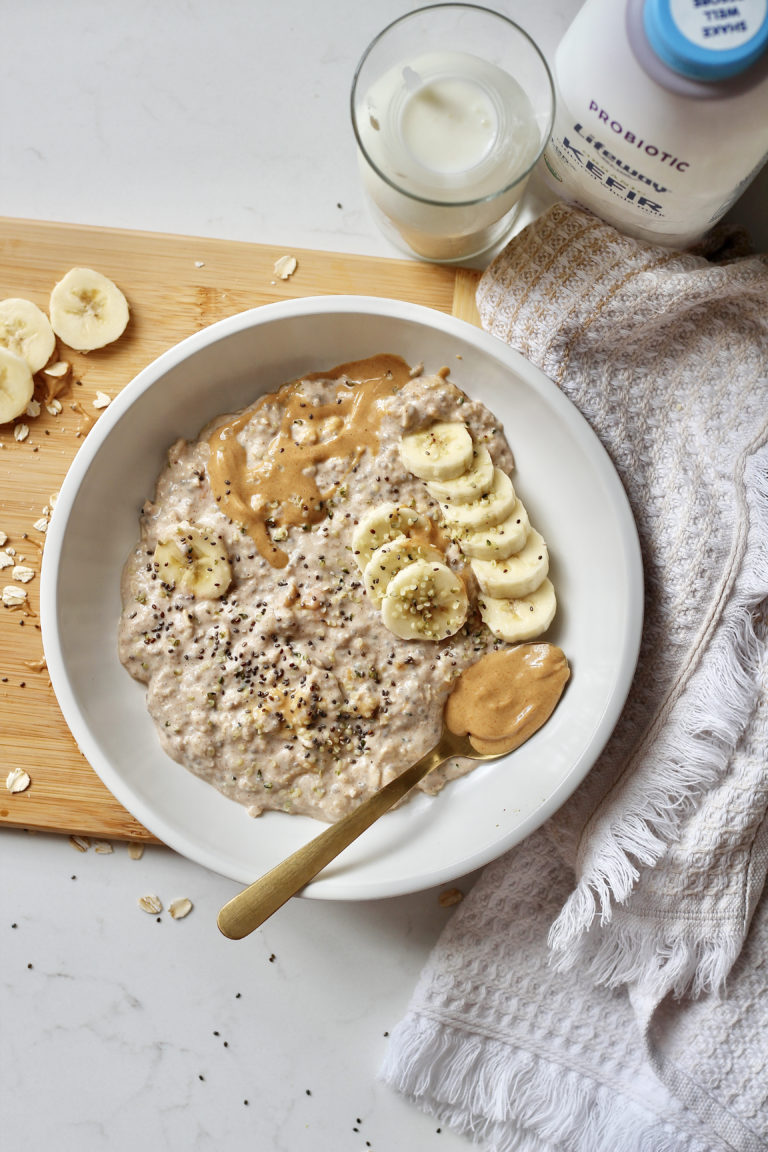
3. PB & J Power Bites
I’ve never been the kind of mom that has freshly baked treats waiting after school for my kids. But, you better believe I can whip up these easy no bake PB&J Bites in no time!
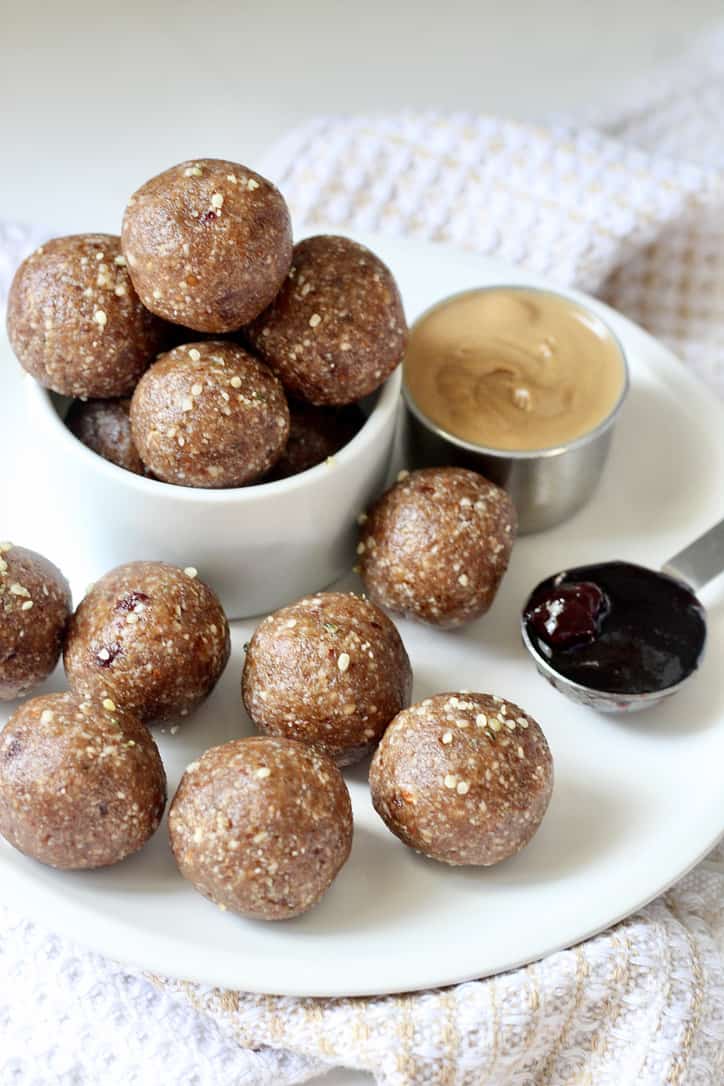
4. Diabetes Friendly Sourdough French Toast
There are so many dishes that people with diabetes often find themselves thinking they can’t have, and French toast is definitely one of them. This sourdough French toast recipe uses a few strategic ingredient swaps that make for a perfectly balanced and delicious way to start your day… including topping it with peanut butter!
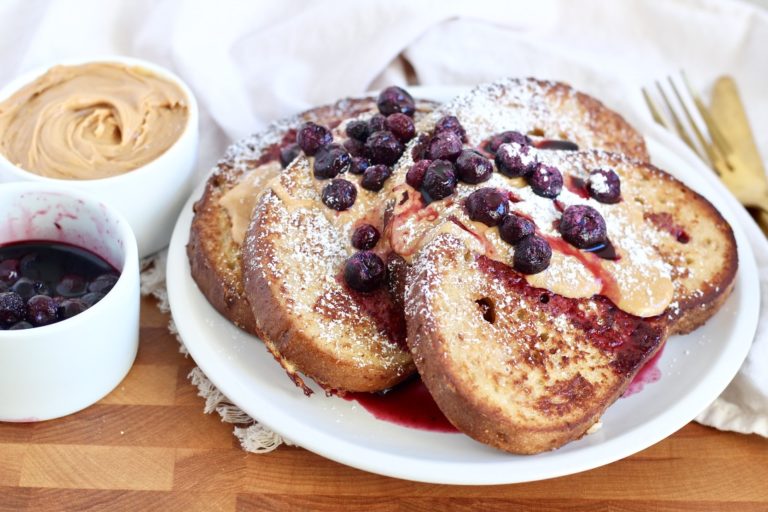
Is peanut butter good for diabetes? The final word
So, is peanut butter good for diabetes? Peanut butter is a low glycemic load food, and can be a delicious part of a diabetes-friendly diet.
What other foods are good for diabetes?
- Is oatmeal good for diabetes?
- Are beets good for diabetes?
- Is pineapple good for diabetes?
- Are sweet potatoes good for diabetes?
